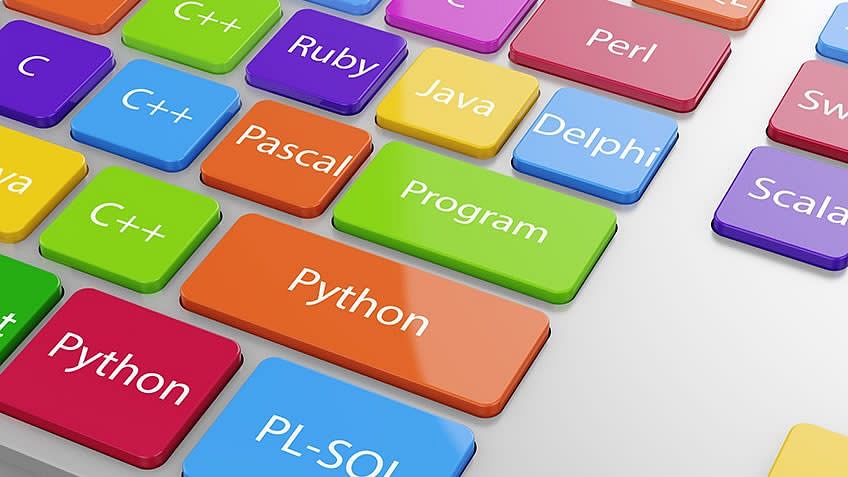Programming Languages: Definition, Types, & Uses
Programming languages are terms that are quite familiar to beginner programmers. By utilizing these languages, you can make a PC or smartphone function correctly, enable automatic functions in devices like air conditioners, and even create robots.
But what exactly is a programming language? What are some examples? How do they differ from other languages in programming? Let’s dive deep into understanding this.
What is a Programming Language?
According to official sources such as Tech Terms and Hackr, the definition of a programming language is essentially a medium through which computers communicate. Similar to humans, computers require a language to interact.
The combination of various commands in programming languages forms meaningful constructs used to communicate specific tasks. For instance, consider how a microphone captures your voice and records it onto a computer.
This process involves different components communicating to convert sound waves into a documented file.
All of these interactions are structured using programming languages, crafted by developers to guide computers in executing specific actions when interacted with by users.
Simply put, a programming language is a series of commands and instructions for a computer to follow when interacting with humans.
Its functions range from creating websites, writing commands for PC operations, developing games, to building various types of applications.
Levels of Programming Languages
Programming languages are seen as solutions to manually writing in binary. This results in a dichotomy of levels in programming languages, primarily high-level and low-level languages.
As explained by Tech Terms, high-level languages facilitate easy communication between computer components.
This tier encompasses languages like C++, Python, PHP, and C#, which are relatively comprehensible to humans.
Conversely, low-level languages are used by computers or machines. Binary is one such low-level language, alongside other forms of encryption or symbols used for storing particular information.
Basic commands such as MOV (move), ADD (add), and SUB (subtract) are also part of this category.
Five Widely Used Programming Languages
Java
Java is a versatile language supporting numerous devices from PCs to smartphones. It's extensively used in Android apps, thanks to its ease of use. Developed by Sun Microsystems in 1991, the language was named after Java, a type of coffee, because its creator, James Gosling, was fond of it.PHP
PHP (Hypertext Preprocessor) is predominant in developing websites such as WordPress and Facebook. It allows developers to create websites per their specifications, with numerous free tutorials available for learning PHP.C Language
As one of the oldest languages, C was introduced by Dennis Ritchie in the 1970s. Any programming student commonly begins with C due to its foundational role in many other programming languages today.Visual Basic
Developed by Microsoft, Visual Basic serves as the foundation for applications on Windows operating systems. It’s designed specifically for developing Windows-based applications.Python
Known for being a high-level language, Python enables the development of multifaceted applications. It's user-friendly, making it accessible to beginners aiming to develop applications. Innovations like Instagram, Pinterest, and Google utilize Python.
Programming Languages and Other Types of Languages
In programming, you’ll encounter terms like markup languages and scripting languages. Here's a brief distinction per Code Snail and Geeks for Geeks:
Programming vs. Markup Languages
Markup languages aren't about logic or interaction but rather altering website appearances into specific codes since computers can’t comprehend human languages directly. They are converted by computers into displays without incorporating interaction logic.Programming vs. Scripting Languages
Scripting languages are subsets of programming languages. Both offer instructions and logic to computers. However, while programming languages are compiled (translated all at once into binary) increasing efficiency, scripting languages interpret scripts line by line, affecting processing speed.
Conclusion
In summary, programming languages are standardized instructions used to command computers to perform various functions.
They facilitate the creation of computer programs by leveraging logical rules, leading to advanced technology that shapes our modern world.
Programming languages, categorized broadly into Low Level, Middle Level, High Level, and Object-Oriented, play pivotal roles in data processing and system operation.
They enable the creation and development of applications or websites tailored to specific needs and functions.
As with other business applications, accounting systems too are crafted using these languages to support business efficiency through comprehensive financial reporting, inventory, sales, purchase modules, and more.





Post a Comment for "Programming Languages: Definition, Types, & Uses"